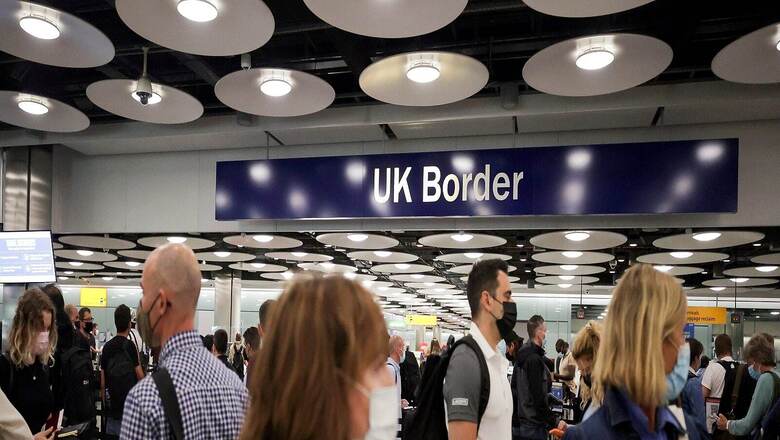
views
London: A new study has shown that the airborne transmission of COVID-19 is highly random and suggests that social distancing alone is not effective in controlling its spread, reiterating the importance of vaccination and face masks. A team of engineers from the University of Cambridge used computer modelling to quantify how droplets spread when people cough. They found that in the absence of masks, a person with COVID-19 can infect another person at a two-metre distance the measurement being used in the UK, even when outdoors.
The team also found that individual coughs vary widely, and that a so-called safe distance could have been set at anywhere between one to three or more metres, depending on the risk tolerance of a given public health authority. One part of the way that this disease spreads is virology: how much virus you have in your body, how many viral particles you expel when you speak or cough, said Dr Shrey Trivedi, the Indian-origin first author of the study published in the journal Physics of Fluids' this week.
But another part of it is fluid mechanics: what happens to the droplets once they're expelled, which is where we come in. As fluid mechanics specialists, we're like the bridge from virology of the emitter to the virology of the receiver and we can help with risk assessment, explained Trivedi from the Department of Engineering at the University of Cambridge. The results of the study suggest that social distancing is not an effective mitigation measure on its own, and underline the continued importance of vaccination, ventilation and masks, especially in the winter months ahead.
Despite the focus on hand-washing and surface cleaning in the early days of the pandemic, it's been clear for nearly two years that COVID-19 spreads through airborne transmission. Infected people can spread the virus through coughing, speaking or even breathing, when they expel larger droplets that eventually settle or smaller aerosols that may float in the air. I remember hearing lots about how COVID-19 was spreading via door handles in early 2020, and I thought to myself if that were the case, then the virus must leave an infected person and land on the surface or disperse in the air through fluid mechanical processes, said Professor Epaminondas Mastorakos from Cambridge's Department of Engineering, who led the research.
Mastorakos is an expert in fluid mechanics: the way that fluids, including exhaled breath, behave in different environments. Over the course of the pandemic, he and his colleagues have developed various models for how COVID-19 spreads. In the current study, the Cambridge researchers set out to measure this bridge through a series of simulations. The researchers found that there isn't a sharp cut-off once the droplets spread beyond two metres.
When a person coughs and isn't wearing a mask, most of the larger droplets will fall on nearby surfaces. However, smaller droplets, suspended in the air, can quickly and easily spread well beyond two metres. How far and how quickly these aerosols spread will depend on the quality of ventilation in the room. In addition to the variables surrounding mask-wearing and ventilation, there is also a high degree of variability in individual coughs.
Each time we cough, we may emit a different amount of liquid, so if a person is infected with COVID-19, they could be emitting lots of virus particles or very few, and because of the turbulence they spread differently for every cough, said Trivedi. The researchers say that while the two-metre rule is an effective and easy-to-remember message for the public, it isn't a mark of safety, given the large number of variables associated with an airborne virus. Vaccination, ventilation and masks while not 100 per cent effective are vital for containing the virus.
We're all desperate to see the back of this pandemic, but we strongly recommend that people keep wearing masks in indoor spaces such as offices, classrooms and shops. There's no good reason to expose yourself to this risk as long as the virus is with us, said Mastorakos. The team are continuing this research with similar simulations for spaces such as lecture rooms that can help assess the risk as people spend more time indoors.
The research was supported in part by the Engineering and Physical Sciences Research Council (EPSRC), part of UK Research and Innovation (UKRI).
Read all the Latest News here



















Comments
0 comment